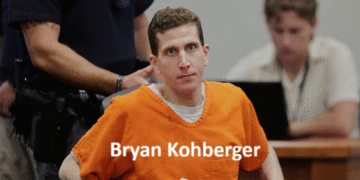The disappearance of Etan Patz in 1979 shocked the nation and became one of America’s most infamous cold cases. For decades, the mystery remained unsolved, haunting the public and the Patz family. In 2012, a breakthrough came when Pedro Hernandez, a New Jersey man, confessed to the crime. But who is Pedro Hernandez, and what led to his involvement in this tragic case? This article delves into his background, the details of the case, and the legal proceedings that followed.
The Disappearance of Etan Patz: A National Tragedy

On May 25, 1979, six-year-old Etan Patz vanished while walking to his school bus stop in New York City’s SoHo neighborhood. It was the first time his parents had allowed him to walk alone, and his disappearance sparked a massive search effort. Etan’s face was one of the first to appear on milk cartons as part of a missing children’s campaign, making his case a symbol of the fight against child abduction.
Despite extensive investigations, no trace of Etan was found, and the case went cold. For over three decades, the Patz family and law enforcement agencies sought answers, but the mystery remained unsolved—until Pedro Hernandez came into the picture.
Who is Pedro Hernandez?
Pedro Hernandez was born in 1958 in Puerto Rico and moved to New York City as a teenager. At the time of Etan’s disappearance, Hernandez was an 18-year-old working at a bodega near the Patz family’s home. Described as a quiet and unassuming individual, Hernandez lived a relatively ordinary life until his shocking confession in 2012.
Hernandez had no prior criminal record and was largely unknown to law enforcement. However, his connection to the bodega near Etan’s bus stop made him a person of interest decades later.
The Confession That Shocked the Nation

In 2012, Pedro Hernandez was arrested after his brother-in-law contacted authorities, claiming Hernandez had confessed to killing a child in the late 1970s. During police interrogations, Hernandez admitted to luring Etan Patz into the bodega’s basement, strangling him, and disposing of his body in a nearby dumpster.
Hernandez’s confession was detailed and included specific information about the crime. However, it also raised questions about its reliability. Hernandez had a history of mental health issues, including schizophrenia and hallucinations, which led some to doubt the validity of his confession.
The Trial and Conviction
Pedro Hernandez’s trial began in 2015 and was marked by intense media scrutiny. The prosecution argued that Hernandez’s confession was credible and supported by circumstantial evidence, including his knowledge of the bodega’s layout and his emotional breakdowns during questioning.
The defense, however, contended that Hernandez’s confession was coerced and influenced by his mental health struggles. They also pointed to another suspect, Jose Ramos, a convicted pedophile who had been linked to the case in the 1980s.
After two trials—the first ending in a hung jury—Hernandez was found guilty of kidnapping and murdering Etan Patz in 2017. He was sentenced to 25 years to life in prison.
The Impact of the Case
The Etan Patz case had a profound impact on American society. It led to significant changes in how missing children cases are handled, including the creation of the National Center for Missing and Exploited Children. Etan’s disappearance also raised awareness about child safety and the importance of community vigilance.
For the Patz family, the trial brought a sense of closure, though many questions remain unanswered. The case remains a haunting reminder of the fragility of life and the enduring pain of unresolved tragedies.
Pedro Hernandez: A Controversial Figure

Pedro Hernandez’s role in the Etan Patz case continues to be a subject of debate. While his confession and conviction provided answers to a decades-old mystery, doubts about his guilt persist. Some believe Hernandez’s mental health issues and the lack of physical evidence cast uncertainty on the verdict. Others argue that his detailed confession and emotional reactions during the trial were proof of his involvement.
Regardless of the controversy, Hernandez’s name is forever tied to one of America’s most famous cold cases.
Conclusion
The case of Etan Patz and the involvement of Pedro Hernandez remain one of the most tragic and complex chapters in American criminal history. While Hernandez’s conviction brought a measure of closure to the Patz family, the case continues to spark debate and reflection. Pedro Hernandez’s story is a reminder of the enduring impact of crime, the complexities of the justice system, and the importance of seeking truth and justice for victims and their families.
(FAQs) About Pedro Hernandez and the Etan Patz Case
Q1 Who is Pedro Hernandez?
Pedro Hernandez is a New Jersey man who confessed to the 1979 kidnapping and murder of six-year-old Etan Patz. He was convicted in 2017 and sentenced to 25 years to life in prison.
Q2 What was Pedro Hernandez’s connection to Etan Patz?
Hernandez worked at a bodega near Etan Patz’s bus stop at the time of the disappearance. He claimed to have lured Etan into the basement and killed him.
Q3 Why was Pedro Hernandez’s confession controversial?
Hernandez’s confession was controversial due to his history of mental health issues, including schizophrenia, which raised questions about its reliability.
Q4 Was Pedro Hernandez the only suspect in the Etan Patz case?
No, another suspect, Jose Ramos, a convicted pedophile, was also linked to the case. However, Hernandez’s confession and subsequent conviction shifted the focus to him.
Q5 What was the outcome of Pedro Hernandez’s trial?
After two trials, Pedro Hernandez was found guilty of kidnapping and murdering Etan Patz in 2017. He was sentenced to 25 years to life in prison.
For More Information Visit Bratish Magazine

















































































